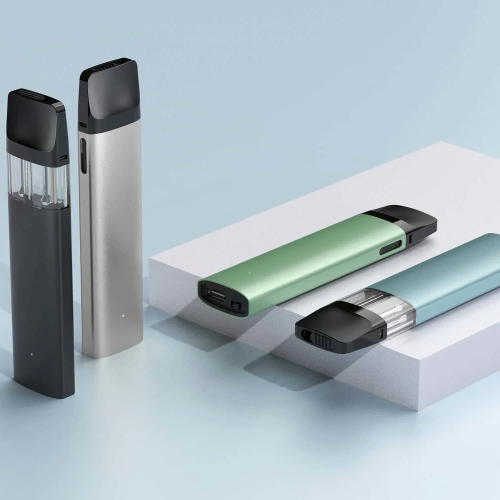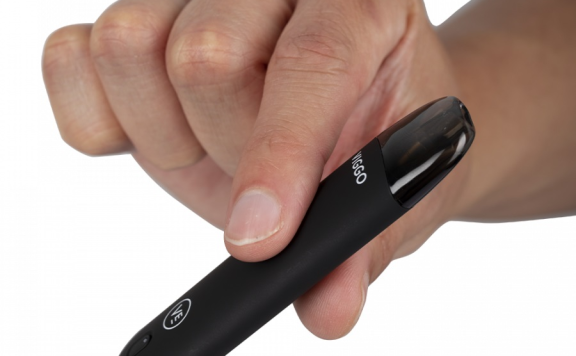Pod Vapes are some of the most popular vaping devices on the market today, and much of their popularity has to do with the fact that they’re extremely simple to use. All that you need to do is charge your device and push in a pod, and you’re ready to start vaping. Compared with disposable vapes – which are also extremely popular – Pod Vapes also have the additional benefit of being much more environmentally friendly because they’re rechargeable. While disposable vapes need to be replaced after just a few days, a pod system can potentially last many months.

A Pod Vape might seem like a fairly simple device, but what’s going on under the hood is actually more complex than you might think. It’s worthwhile to understand how pod vapes work partially because it’ll give you a better understanding of the impressive technology in a vaping device and partially because it’ll give you a clearer idea of what might be going on the next time your device isn’t working as it should.
So, how do pod vapes work? In this article, we’re going to walk you through the things that happen in your device when you puff on it or press the fire button.
Table of Contents
An Automatic Puff Sensor Turns Your Pod Vapes
In most Pod Vapes, there’s an automatic puff sensor that detects the air flowing through the device when you puff on it and automatically turns the device on. Pod systems with manual fire buttons also exist, but the majority of the pod vapes sold by V2 Cigs and other higher-end vape shops use automatic puff sensors because that’s what most of the members of the vaping community want. When air flows over the sensor, the sensor detects it and activates the device. This usually happens faster than you can bat your eye, which is particularly impressive considering everything else that happens before the device produces vapor.
An Integrated Circuit and Firmware Confirm Your Device Is Safe
Although a pod vape turns on when you draw air through it, the device doesn’t actually start generating vapor immediately. Before that happens, the device scans itself to confirm that there are no issues that could potentially make vaping unsafe. Some of the safety checks performed by a pod vape may include:
- Testing the device’s current internal temperature to confirm that the device isn’t in danger of overheating.
- Checking the resistance of the connected pod or atomizer coil to confirm that it falls within the expected range and doesn’t have a short circuit.
- Checking the battery’s voltage to confirm that it has enough of a charge for continued vaping.
All of these safety checks happen when you puff on your pod system, and they’re completed so quickly that the process seems nearly instantaneous. These days, it’s typical for a pod system to produce vapor after a delay or just a few thousandths of a second when you puff on the device.
A Lithium-ion Battery Powers Your Device
A pod vapes puff sensor, integrated circuit and firmware all need power to operate, and that’s before you even get to the actual vaping aspect of using the device. A vaping device needs a significant amount of energy to perform all of these functions, and a lithium-ion battery is the only power source small and dense enough to be practical. Depending on the size of the pod system you’re using, the battery will typically have a capacity between about 250 and 1,000 mAh. That’s usually enough power to use at least one full pod from start to finish. If a pod system blinks when you try to use it, it’s time to recharge the battery. You can do that by connecting the device to your computer’s USB port using the cable or dock included with the starter kit.
The Pod Vapes Vaporizes Your E-Liquid
In any pod system, the pod is arguably the most important component because it does the majority of the work by both vaporizing the e-liquid and managing the flow of the vape juice through the pod. For now, we’ll focus on the vaporization aspect.
In the center of a vape pod, you’ll see a metal tube leading from the bottom of the pod to the mouthpiece at the top. The tube is the pod’s chimney. When you vape, the vapor enters your mouth by traveling through the chimney from the atomizer coil at the bottom of the pod.
The atomizer coil in a pod system is made either from a strip of metal mesh or from a length of wire twisted into a coil shape. The material has a high electrical resistance, and it heats up when a current passes through it. The heat causes the e-liquid in the pod to vaporize, and that’s how all vaping devices work.
Some pod systems have atomizer coils made from materials that change their electrical resistance when they’re heated. By monitoring the change in resistance, a vaping device can estimate the coil’s current temperature and reduce its power level when the coil seems to be overheating. If you’re using a pod system that has this feature, the device will stop producing vapor when the pod is empty. At this point, you’ll need to refill the pod or replace it with a new pre-filled pod. If you’re using a pod system that doesn’t have the ability to estimate the coil’s temperature, you’ll experience a very harsh, burnt hit if you try to vape when the pod is empty.
The Pod Vapes Manages Your Vape Juice Supply
The other key component in your device’s pod is the wick, which is generally made from either silica or cotton. If you’re using a pod system with a silica wick, you’ll see the tiny silica threads extending from the coil assembly at the bottom of the pod. If the pod has a cotton wick, you’ll see the wick through small white openings spaced around the coil assembly.
Regardless of the material used, the function of the wick in a pod system is the same: It draws e-liquid from the pod’s reservoir to the heating wire inside the coil assembly. The wick keeps the heating wire fed with vape juice because it touches the wire directly. When you use your device, the inner portion of the wick dries out and then replenishes itself with more e-liquid from the pod’s reservoir. This reduces the amount of e-liquid in the reservoir by a small amount, and you can see the level decrease as you use your device. It’s always a good idea to keep an eye on your pod to ensure that you won’t run out of vape juice unexpectedly.


